General Theory of Relativity
One of the most important theories in
the field of physics is Einstein’s theory of relativity. The theory of
relativity has 2 parts one is the special theory of relativity and the other is
a general theory of relativity. As in the previous article, I discussed the
Special theory of relativity. Now will discuss the general theory of
relativity. The general theory of relativity was proposed by Einstein in 1915.
The theory revolutionized our concept of space-time and gravity. General
relativity is a theory of gravitation that describes the motion of massive
objects in spacetime, proposing that gravity is the curvature of spacetime
caused by the presence of mass and energy. Now let’s dive into the theory.
Background:
Before general relativity, Isaac
Newton's laws of motion and gravitation had been the prevailing theory of
gravity for over two centuries. However, as scientists made more precise
observations and conducted experiments, certain inadequacies and
inconsistencies with Newtonian gravity became apparent. According to Newton’s
view of gravity, He stated that “Every object in the universe attracts every
other object with a force called gravity. The force of gravity between two
objects is directly proportional to the product of their masses and inversely
proportional to the square of the distance between their centers “. This
relationship is expressed by the formula:
F = (G * m1 * m2) / r^2
F = Force of
gravity
G =
Gravitational constant
m1, m2 =
Masses of the two objects
r = Distance
between their centers
Newton's
theory of gravity postulated that gravitational interactions act
instantaneously across any distance, even though no physical mechanism for this
action was explained. According to Newton's view, if the Sun were to suddenly
disappear, the Earth would not immediately be aware of it and would continue
its motion in a straight path, tangent to its previous orbit. Also, Newton was
unable to fully explain the motion of planet Mercury and lacked a deeper
understanding of the nature of gravity.
Unlike
Newtonian gravity, which described gravity as a force acting instantaneously at
a distance, general relativity explained gravity as the curvature of spacetime
caused by the presence of mass and energy. In general relativity, the concept
of spacetime plays a crucial role. Instead of treating space and time as
separate entities, Einstein unified them into a four-dimensional continuum
known as spacetime. Massive objects, such as planets and stars, deform this
spacetime, creating what we experience as gravity.
Einstein’s
Mass-Energy Equivalence:
In 1905
Einstein introduced the groundbreaking concept called mass-energy equivalence.
The formula is,
E= mc^2
The equation
states that energy is directly proportional to the mass and square of the speed
of light. In simple terms, it means energy and mass are interchangeable, and a
small amount of mass can be converted into a large amount of energy. Now let’s
understand it using scenarios. Like consider you have a kettle, and it has
water in it you boil water and water starts boiling and evaporates the mass of
water in the kettle is reduced and steam and heat are produced which is energy.
Like the process of generation of electricity from fuel is same. Like the combustion
of fuel is done it produces a lot of heat and using this heat the water present
in the boiler is heated and because of heating water converts into steam and
this high-pressure steam is thrown into turbines and when turbines move
electricity is generated. So, you see water in the boiler reduces with the
passage of time and this mass is converted to energy which produces
electricity. This is also called the rest mass energy formula. Rest mass
energy is the energy of an object that is at rest. Like in the above scenario,
water is at rest. When an object is in motion it has an additional energy
called kinetic energy. So total energy in this case is,
Total energy = mc^2 + ½ * mv^2
Where m is
the mass of an object and v is the velocity of the object.
The
conversion of energy into mass is a fascinating concept that occurs in
high-energy environments. One of the most common scenarios where this happens
is in particle accelerators. In particle accelerators, scientists accelerate
particles to incredibly high speeds, often close to the speed of light. When
these high-speed particles collide, they release a tremendous amount of energy.
This energy can sometimes be converted into new particles with mass. According
to Einstein's mass-energy equivalence (E=mc^2), a sufficiently high amount of
energy can create particles with mass. I think the best example here will be
the concept of pair production. In pair production, a high-energy photon
(a particle of light) interacts with a nucleus or an electron. The energy of
the photon is converted into the mass of an electron and its antiparticle, a
positron, and photon disappears.
Let’s dive
into the energy-mass equation more. Actually, the equation E=mc^2 is incomplete
you might not know.
E=γmc2
Where γ Lorentz factor which is equal to
The
curvature of Space-time:
In the general theory of relativity, Einstein called gravity
the curvature of space-time. Einstein united space and time asked space-time as
a combined entity. Let’s understand the concept. Take a rubber sheet and place
a heavy ball in it. You will see the heavy ball curve the rubber sheet around
it. Now take a light ball and place it on a rubber sheet. You will see that it
will curve the rubber sheet less than the heavy ball and will continue to move
around the heavy ball if it is placed under the curvature of the rubber sheet
caused due to heavy ball. So, in order to understand simply take the rubber
sheet as space-time, the heavy ball as the sun, and the light ball as Earth.
The massive and dense objects curve the space-time more than less massive
objects. Everything like any object that lies under the curvature of an object
began to move around it and is captured by it. So, Massive objects, such as
planets and stars, deform this spacetime, creating what we experience as
gravity. Now discuss geodesics. Geodesics are the paths that objects
naturally follow in spacetime when they are under the influence of gravity
alone. These paths represent the straightest possible trajectories within the
curved spacetime geometry. Geodesics is the shortest path that an object adopts
during motion in space-time right. Just like on a flat surface the shortest
path between 2 points is a straight line. Imagine an object moving through
space without any forces acting upon it, other than gravity. In the absence of
external forces, the object will move along a geodesic, which is the most
natural and effortless path determined solely by the curvature of spacetime
caused by nearby masses. For example, consider a planet orbiting a star like
our Sun. The planet follows a geodesic path in the curved spacetime around the
star. It is as if the planet is moving in a straight line within this curved
spacetime, even though the overall motion appears as an elliptical orbit when
observed from a distance.
Space-time
curvature also effects the time known as gravitational time dilation.
The time ticks more slower in region where space-time is more curved than the
region where the space-time is less curved. Around black holes time will move
slower because the black hole curves space-time a lot as compare to time moving
around stars . Around stars the space-time is less curved as compare to black
hole so time will pass faster around star than black hole. While a person in
black hole will not observe that time is ticking slower but the person in star
or in other planet when it will observe the person in black hole it will conclude
that time is passing slower for person
in black hole. Same is the case the person on black hole will observe that time
for person present in star or planet is moving faster. The concept of
gravitational time dilation is very important and is used in GPS system.
Equivalence
Principle:
The Equivalence Principle is a
foundational principle of general relativity that establishes a deep connection
between gravity and acceleration. In simpler terms, the Equivalence Principle
suggests that the effects of gravity on an observer inside a freely falling
elevator are indistinguishable from those of acceleration in the absence of
gravity. This principle implies that gravity is not a force in the traditional
sense, but rather the manifestation of curved spacetime caused by the presence
of mass and energy. Let’s understand the example simply. Suppose you are in an
elevator and it’s in space you have worn sticky shoes and you have a ball in
hand when you release a ball it will float because of free fall and if the
elevator is accelerating then you will experience a force on yourself and if
you release a ball the ball will move downward towards the ground of elevator.
If the same elevator is on the earth you will experience a gravitational force.
So, if the elevator is fully closed you cannot see outside. So, it will be
difficult for you to answer whether you are experiencing force due to gravity
or acceleration there is some relationship between them called the equivalence
principle.
Einstein’s
Field Equation ( EFE):
The Einstein field equation is a set of equations in the theory of general relativity that describe how spacetime is curved in the presence of mass, energy, momentum, and pressure. In simpler terms, it explains the relationship between the distribution of matter and the geometry of spacetime.
Before diving into the field equation first you should know what Tensor is. Tensor is basically a large array of data. You can say it’s the array of matrices in a simple way they are very complex. To solve tensors, we use computers. A scalar can be considered a 0-dimensional tensor (0-tensor), which is just a single value or number. A vector is a 1-dimensional tensor (1-tensor), represented as an array of numbers, such as [x, y, z], where each element represents a component along a specific direction. A second-rank tensor (2-tensor) can be thought of as an array of vectors, represented as a two-dimensional array.
Now let’s
discuss the field equation,
In the field
equation this represents the stress energy tensor. Let's consider the example
of a planet (like Earth) placed in spacetime. The stress-energy tensor would
describe the properties of the planet and the effects it has on spacetime
around it. The stress-energy tensor tells us about the curvature of spacetime
caused by the presence of mass, energy.
G => It
is the gravitational constant
C =>
Speed of light
It’s the cosmological constant. The cosmological constant is a way to describe a repulsive force that counteracts the attractive force of gravity say anti-gravity. Studying it more provides a description of Dark energy that works opposite to gravity.
It is the metric tensor.
It is basically the distance between 2 points in space-time.
It is the scalar
curvature. It simply describes how much
spacetime is curved at a specific location.
It is the Ricci curvature
tensor that gives a description of how curvature changes from place to place. Imagine
you are walking on the surface of a hill or a valley. As you move around, you
may notice that the ground's steepness changes. In some areas, it might be very
steep (high curvature), while in others, it might be flatter (low curvature).
The Ricci curvature is like a measure of this changing steepness as you walk
around on the surface.
By solving the equation
for different scenarios, such as planets orbiting stars or the evolution of the
universe as a whole, we can understand the behavior of matter and spacetime in
a gravitational field, including the bending of light, the motion of celestial
bodies, and the expansion of the universe. The Einstein field equations have
been extensively tested and found to be remarkably accurate in describing
various gravitational phenomena.
Now let’s dive into new concepts starting with the curvature
of space time. The massive objects curve space-time more than the less massive
objects. Like stars curve space-time more than the planets. Let’s discuss the
fascinating consequence of the general theory which is black holes.
A
black hole is a region in space where gravity is so strong that nothing, not
even light, can escape its gravitational pull. It is formed when a massive star
collapses under its own gravity during a supernova explosion. The collapse
causes the star's matter to become extremely dense, creating a gravitational
field that is incredibly intense. Now let’s discuss briefly how black holes are
actually formed. When a star that is more massive than the Sun has burned
all of its nuclear fuel, its core will begin to contract under the force of
gravity. This contraction generates heat, which causes the surrounding layers
of the star to expand and cool. As the core continues to contract, the
temperature and pressure in the core will increase. Eventually, the core will
become hot and dense enough to ignite helium fusion, where two helium nuclei
combine to form beryllium. This process generates a lot of energy, which causes
the star to expand and become brighter. Once helium fusion begins, the star
will enter a new phase of its life known as the red giant phase. During this
phase, the star will continue to expand and cool, eventually becoming so large
that it may engulf nearby planets. As the star continues to fuse heavier
elements, the core will eventually become composed of iron, which cannot
undergo further fusion without absorbing energy instead of releasing it. Since
the core cannot support itself, it will collapse rapidly under the force of
gravity, producing an enormous amount of heat and pressure. This sudden
collapse of the core will generate a shock wave that travels outward through
the layers of the star. When the shock wave reaches the outer layers of the
star, it will cause a massive explosion known as a supernova. The supernova
explosion will release an enormous amount of energy, including light, heat, and
radiation, and it will also produce heavy elements such as gold and platinum.
The remaining core of the star will either collapse into a neutron star or a
black hole, depending on its mass. While stars with initial masses above 25-30
solar masses will likely form black holes. The singularity is
a point at the center of a black hole where the mass is thought to be
infinitely compressed into an infinitely small volume. It is a region of
extreme density and gravitational curvature where the laws of physics as we
currently understand them break down. According to general relativity, the
singularity is a point of infinite spacetime curvature, where the laws of
physics as we know them cease to apply. The event horizon is
the boundary of a black hole beyond which nothing, including light, can escape.
Once an object or particle crosses the event horizon, it is destined to be
pulled into the black hole's singularity at the center. The size of the event
horizon is determined by the mass of the black hole. The larger the mass, the
larger the event horizon. An accretion disk is mostly composed
of dust and gas clouds that orbit a black hole These clouds are captured by
other nearby stars by the black hole's gravity. They move faster around the
black holes releasing radiation including X-rays. As many people thought that
black holes are holes they are not holes fact they are black objects.
Now
I think you know well about black holes and space-time curvature. Light is also
affected due to the curvature of space-time. It bends when moving around
massive objects Actually it follows the shortest path in space-time curvature
that appears to us like light is bending but actually it’s following the
shortest path. This phenomenon of bending of light around heavy objects is very
useful known as Gravitational lensing. It is also the fascinating
consequence of the general theory of relativity.
It's
due to gravitational lensing we are able to see distant galaxies. Imagine there
are objects like other stars behind the sun and as the sun is very bright is
bigger in size we wouldn’t be able to see distant objects or galaxies but due
to gravitational lensing it's possible. In normal space-time, light passes
straight but when it passes near the space-time curvature it bends. So the
light from distant galaxies or objects when they pass through the dense
objects/curved space-time bends and light from distant objects finally reaches
us and we are able to see the distant objects that’s fantastic. Just think like
a massive object is acting like a giant magnifying glass.
It is a powerful tool in astronomy used widely. There are various types of gravitational lensing light strong lensing and weak lensing. In strong lensing light’s path is significantly curved and in weak lensing light path is less curved. These light rays are curved and reach the observer so the observer might view the multiple images of a single object. Also due to lensing the images of an object might appear to be stretched like a banana in shape also known as shear.
Now let’s discuss another fascinating consequence of the general theory of
relativity which is gravitational waves.
Think like there is a river consider the river a universe. Consider a boat
moving an object so you will see when the boat moves in a river waves are
produced that’s the disturbance in water. Same when an object moves in space
time waves are produced called gravitational waves. Gravitational waves
are ripples in the fabric of spacetime itself. These gravitational waves travel
outward at speed of light. Although they are very sensitive and difficult to
detect. Gravitational waves are often produced by incredibly massive and
energetic events in the universe, such as the collision of two black holes or
the explosion of massive stars (supernovae). Detecting these waves allows
astronomers to confirm and study these events. For detecting gravitational
waves extremely sensitive detectors, such as LIGO (Laser Interferometer
Gravitational-Wave Observatory), are designed to catch these tiny ripples in
spacetime. Firstly gravitational waves were detected in 2015. When a
gravitational wave passes through Earth, it causes very subtle changes in the
distances between objects that the detectors can pick up.
Let’s dive into the science of how LIGO detected Gravitational waves. These waves travel at the speed of light and carry energy with them. They compress space-time in one direction and stretch it in another. LIGO (Laser Interferometer Gravitational-Wave Observatory) detects these waves using very sensitive equipment. It has two long arms with lasers bouncing between mirrors. The length of both arms is 4 km. It has mirrors and laser is used and a light detector is also present to detect the interference pattern formed. So initially if there are no gravitational waves the detector shows no light like its due to destructive interference. So as told earlier these waves travel in a way that they stretch space-time in one direction and compress in another direction. Suppose when gravitational waves reach the LIGO think in a way that it might stretch space around one arm ( length of arm increases) and compress space around another arm ( length of arm reduces) so in a way due to this variation the bright spot will be visible on the detector due to constructive interference. The brightness of the spot on the detector can tell us about the details of gravitational waves.
Now let’s discuss White Hole. White holes are
theoretical objects that have been proposed in the context of general
relativity, but they are not a confirmed consequence of the theory. They are
imagined to be the opposite of black holes unlike black holes they push
everything away from it including matter and light. We haven’t observed a white
hole up till now.
Worm Holes are
theoretical structures in the fabric of space-time that are like shortcuts
through the universe. They are like tunnels that connect 2 distant parts of
space-time. Like, consider there a locations A and B in space-time. Now if you
want to go to location B from location A in the normal way it may take a lot of
time but using wormholes you can reach location B in a very short time using a wormhole.
They have not observed up till now. Some theories suggest that wormholes might
also enable time travel, allowing you to visit different eras of the universe's
history.
Now discuss another fascinating consequence of general theory called frame dragging or Lense thirring effect. This is like when massive objects rotate so due to their rotation the space-time around it also drags and moves causing the nearby objects to experience a kind of dragging effect. Think like you have a rubber sheet and a fast-moving big-size ball when you will place the moving ball on the rubber sheet the rubber sheet will also move due to the rotation of the ball that’s what frame dragging is. Scientists wanted to test this idea and the spacecraft named Gravity Prob B (GP-B) was sent in Earth’s orbit to observe the effect. GP-B carried very precise gyroscopes. A gyroscope is a device used for measuring or maintaining orientation and angular velocity. It is a spinning wheel or disc in which the axis of rotation is free to assume any orientation by itself. Started with gyroscopes whose spin directions were initially fixed in space. The idea was to observe any changes in the gyroscopes' orientation over time. If frame dragging, caused by Earth's rotation, was real, it would cause these gyroscopes to gradually shift direction. The beauty of the GP-B experiment lay in its precision. And indeed, as the spacecraft orbited Earth, it observed tiny but measurable shifts in the gyroscopes' spin directions. Like, imagine the direction was pointing to an observer exactly right so due to frame dragging the direction changed at some angle and now not exactly pointing to a person. These observations matched exactly what Einstein's theory had predicted for frame dragging.

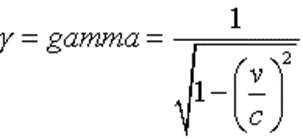









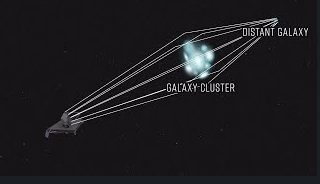



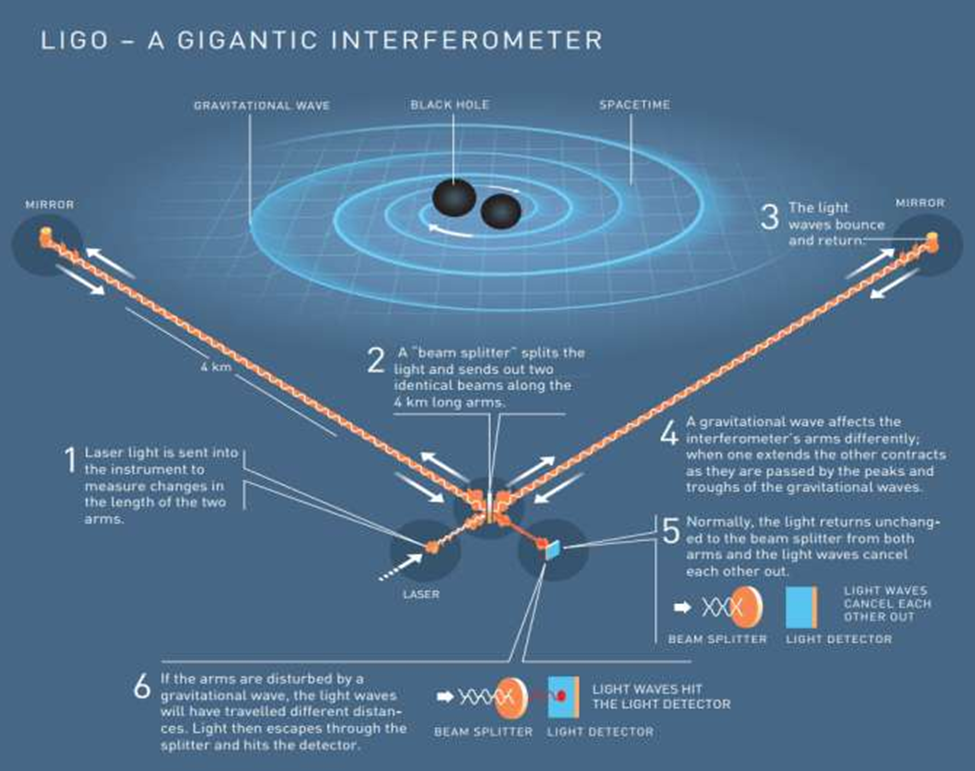
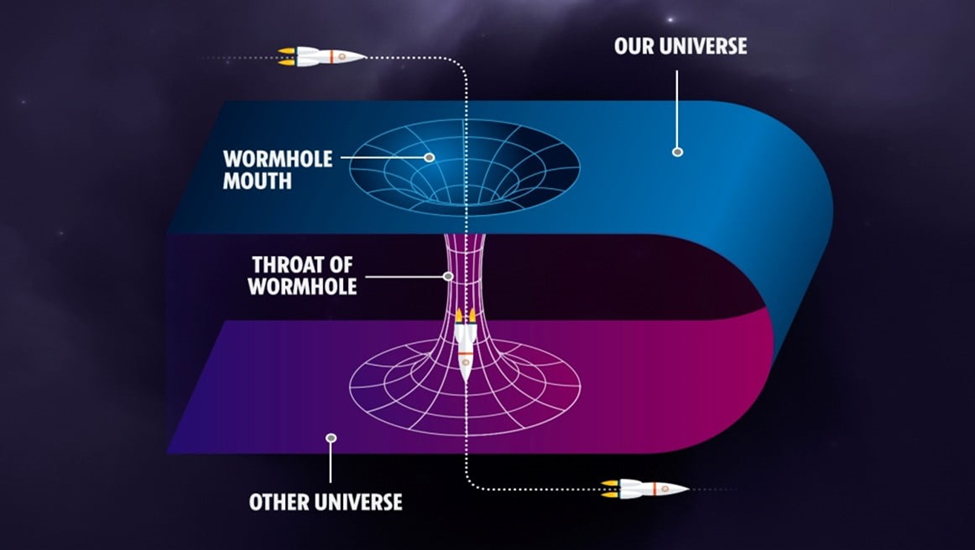
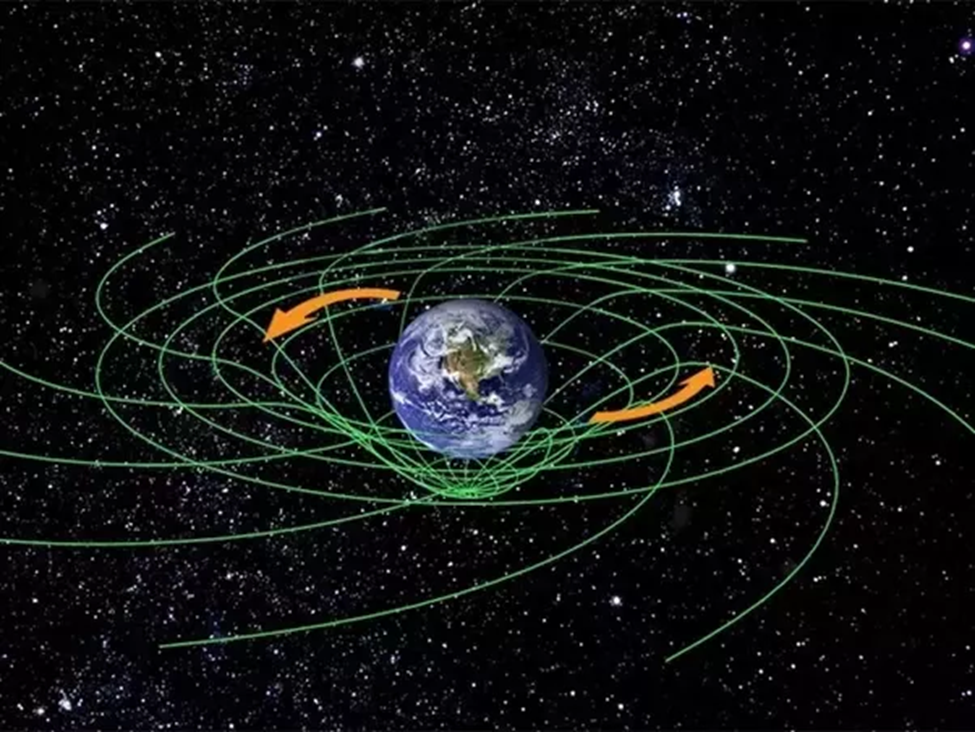



Comments
Post a Comment